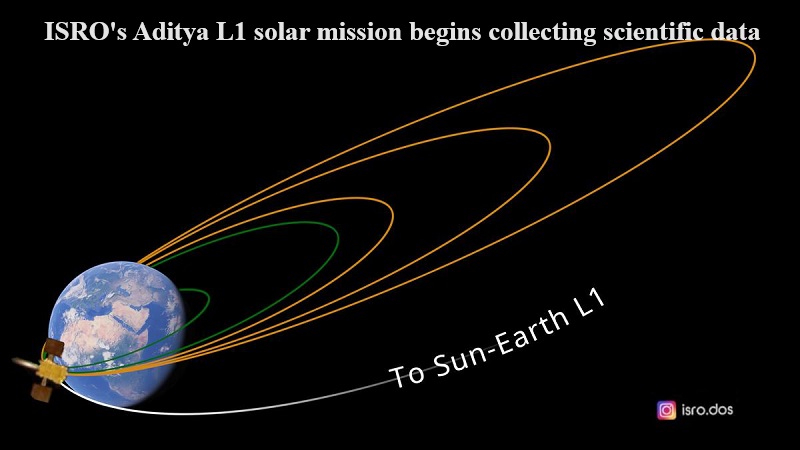
The Indian Space Research Organisation (ISRO) achieved another milestone as its solar mission initiated the collection of scientific data, as announced on Monday, September 18.
The pioneering mission, named Aditya L1, designed to study the Sun, was launched by ISRO on September 2, 2023. Aditya L1 is set to reach Lagrange Point 1 near the Sun after a four-month journey. At this point, it will investigate various celestial phenomena.
Lagrange Points represent positions in space where the gravitational forces of a two-body system, such as the Sun and Earth, create regions of enhanced attraction and repulsion. Spacecraft utilize these points as stationary positions in space, minimizing fuel consumption.
The primary objective of the mission is to study solar winds, which have the potential to disrupt Earth and are often observed as “auroras.”
The Aditya Solar Wind Particle Experiment (ASPEX) payload includes the Supra Thermal & Energetic Particle Spectrometer (STEPS) instrument. STEPS consists of six sensors, each oriented differently and capable of measuring supra-thermal and energetic ions across various energy ranges. These measurements are conducted using both low and high-energy particle spectrometers.
The data collected during Earth’s orbits aids scientists in analyzing particle behavior within Earth’s magnetic field, according to ISRO.
STEPS was activated on September 10, 2023, when the spacecraft was approximately 50,000 km from Earth, equivalent to over eight times the Earth’s radius. After undergoing essential instrument health checks, data collection continued until the spacecraft moved beyond the 50,000 km threshold.
ISRO reported that all STEPS units are operating within normal parameters. These STEPS measurements will persist throughout the cruise phase of the Aditya L1 mission as it progresses toward the Sun-Earth L1 point, and data collection will continue once the spacecraft reaches its intended orbit.
The Physical Research Laboratory (PRL) developed STEPS with support from the Space Application Centre (SAC) in Ahmedabad.

Post Your Comments